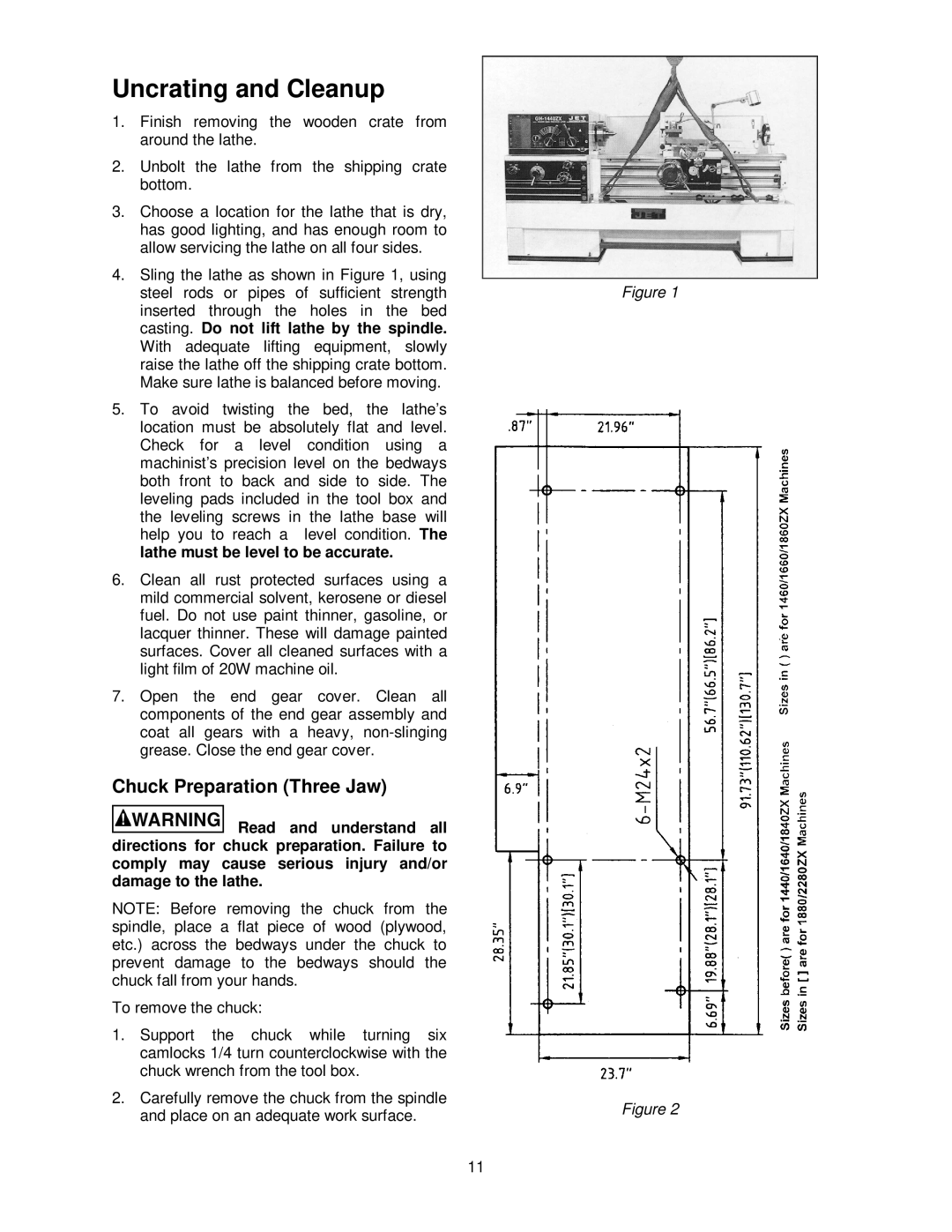
Uncrating and Cleanup
1.Finish removing the wooden crate from around the lathe.
2.Unbolt the lathe from the shipping crate bottom.
3.Choose a location for the lathe that is dry, has good lighting, and has enough room to allow servicing the lathe on all four sides.
4.Sling the lathe as shown in Figure 1, using steel rods or pipes of sufficient strength inserted through the holes in the bed casting. Do not lift lathe by the spindle. With adequate lifting equipment, slowly raise the lathe off the shipping crate bottom. Make sure lathe is balanced before moving.
5.To avoid twisting the bed, the lathe’s location must be absolutely flat and level. Check for a level condition using a machinist’s precision level on the bedways both front to back and side to side. The leveling pads included in the tool box and the leveling screws in the lathe base will help you to reach a level condition. The lathe must be level to be accurate.
6.Clean all rust protected surfaces using a mild commercial solvent, kerosene or diesel fuel. Do not use paint thinner, gasoline, or lacquer thinner. These will damage painted surfaces. Cover all cleaned surfaces with a light film of 20W machine oil.
7.Open the end gear cover. Clean all components of the end gear assembly and coat all gears with a heavy,
Chuck Preparation (Three Jaw)
![]() Read and understand all directions for chuck preparation. Failure to comply may cause serious injury and/or damage to the lathe.
Read and understand all directions for chuck preparation. Failure to comply may cause serious injury and/or damage to the lathe.
NOTE: Before removing the chuck from the spindle, place a flat piece of wood (plywood, etc.) across the bedways under the chuck to prevent damage to the bedways should the chuck fall from your hands.
To remove the chuck:
1.Support the chuck while turning six camlocks 1/4 turn counterclockwise with the chuck wrench from the tool box.
2.Carefully remove the chuck from the spindle and place on an adequate work surface.
11
Figure 1
Figure 2
